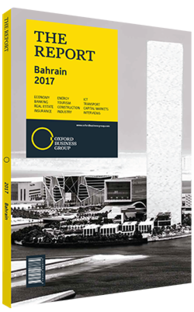Strong demand: Bonds
The Bahraini bond and sukuk (Islamic bond) market has been the best performing GCC fixed-income market up until December 2016, returning an average of 8.7% despite a turbulent period which saw oil prices fall to as low as $28 and the country stripped of its investment-grade, long-term issuer rating.
Investors who participated in the 2016 taps of the 2021 and 2026 US-dollar maturity bonds would have accumulated a total wealth of 9.4% and 15.1%, respectively, as of December 31, 2016, while those who invested in the longer-dated 2044 maturity paper would have made just under 11.8% over the same time period. The demand has been particularly strong for Bahraini-related debt, as the new 2028 and 2024 papers issued in October attracted an order book of $7bn despite only aiming to raise $2bn. The oversubscription ratio of 3.5 times was only beaten by Saudi’s jumbo issuance that was oversubscribed 3.8 times.
Investors have cited Bahrain’s prudent fiscal policy, high yield and strong relationships with neighbouring countries as the primary reasons for holding the kingdom’s debt. Also with the addition of the new bonds, which included a 12-year conventional and a 7.5-year sukuk, Bahrain now boasts one of the most diversified maturity schedules in the GCC for investors to choose from.
CHALLENGES AHEAD: 2016 was also a record issuance year for Bahrain, which issued $4.65bn of gross new debt up until November 2016 and repaid $0.4bn, beating the 2015 record of $4.4bn.
On the whole Bahrain’s budget deficit has grown in recent years due to a counter-cyclical policy of ensuring continued diversification of investment and public support during a period of low oil prices. With total outstanding debt nearing $23.5bn as of the end of November 2016, one of the first challenges that the government of Bahrain will have to overcome in 2017 is to raise the debt ceiling from its current level of $26.6bn in order to accommodate further borrowings to fund the budget deficit. This is expected to come in between $3.5 and $4.5bn in 2017 and could potentially push the total outstanding debt-to-GDP ratio from the expected 75.5% in 2016 to 85.2% in 2017, if fully funded at 2015 GDP figures. These will most certainly be met with higher financing costs, especially also as the US Federal Reserve looks set to gradually increase the Fed fund rates.
The government of Bahrain currently pays an average of 6.2% on nearly $10.3bn of internationally issued debt compared to 4.5% on Bahraini HD issued debt which excludes short term bills.
PLUS POINTS: On the positive side, the refinancing cycle in 2017 is expected to be relatively light, with only BD300m ($795.8m) of local denominated debt maturing in 2017. This gives the government of Bahrain the time needed to implement further measures on diversifying its non-oil revenues and reducing government expenditure. A number of initiatives have already been taken in 2016, most notably the increase in petrol prices from 100 fils ($0.27) to 160 fils ($0.42) as well as a cut in meat subsidies. These, along with other measures, which include hotel and sand extraction taxes, are estimated to have a financial impact of $267m per year from 2016 onwards. Furthermore, the gradual raise of the gas price by 25 cents per year and the re-categorisation of utilities subsidies are expected to generate more than $1.68bn in savings from 2021 onwards.
We also expect the introduction of a 5% value-added tax in 2018 to further improve the outlook on the kingdom’s credit, and therefore increase the demand for bonds issued by the government of Bahrain in the medium term. It is also important to note that during the last 11 years, Bahrain has paid all principal and interest payments with respect to its outstanding borrowings when they fell due.
You have reached the limit of premium articles you can view for free.
Choose from the options below to purchase print or digital editions of our Reports. You can also purchase a website subscription giving you unlimited access to all of our Reports online for 12 months.
If you have already purchased this Report or have a website subscription, please login to continue.

